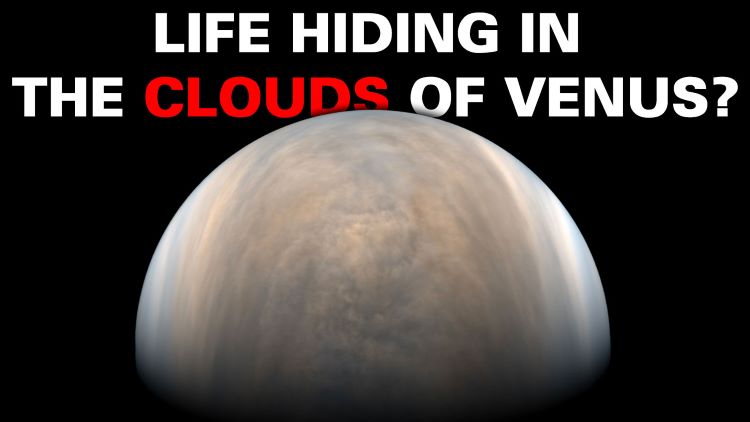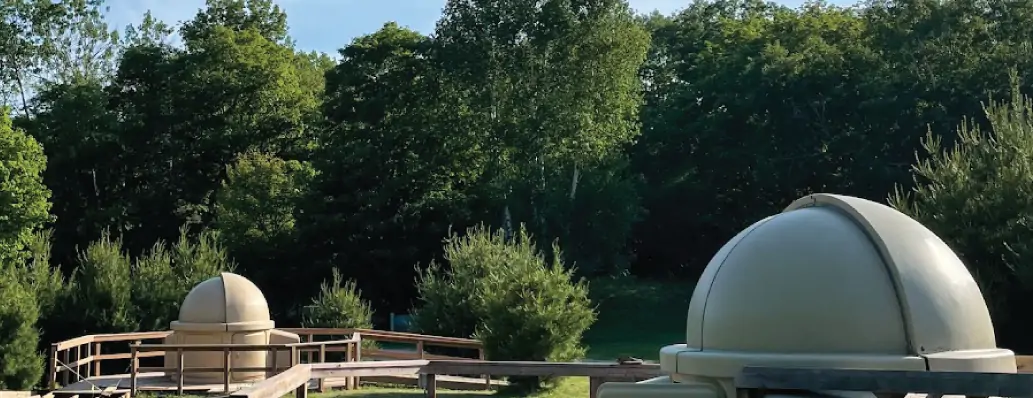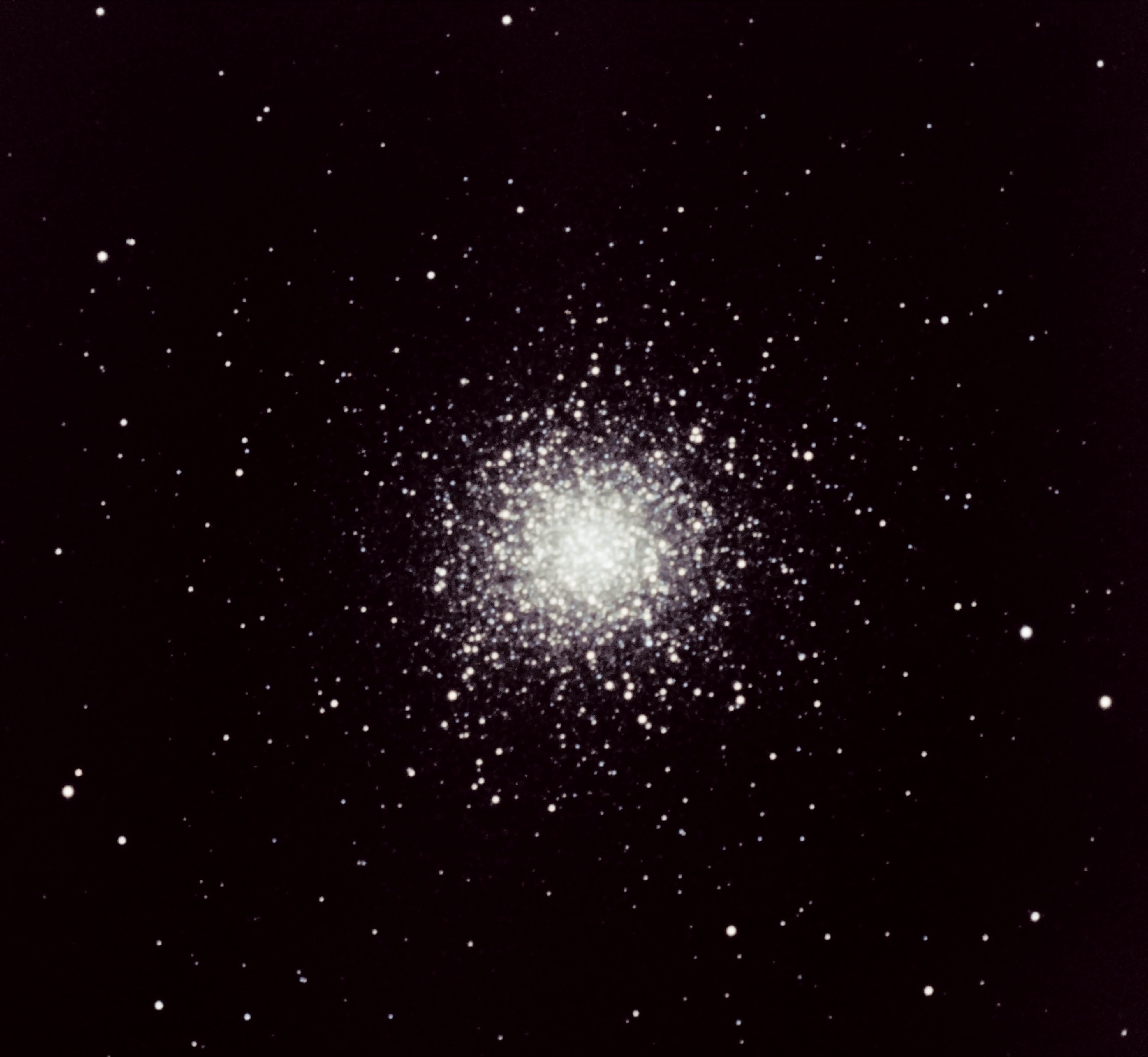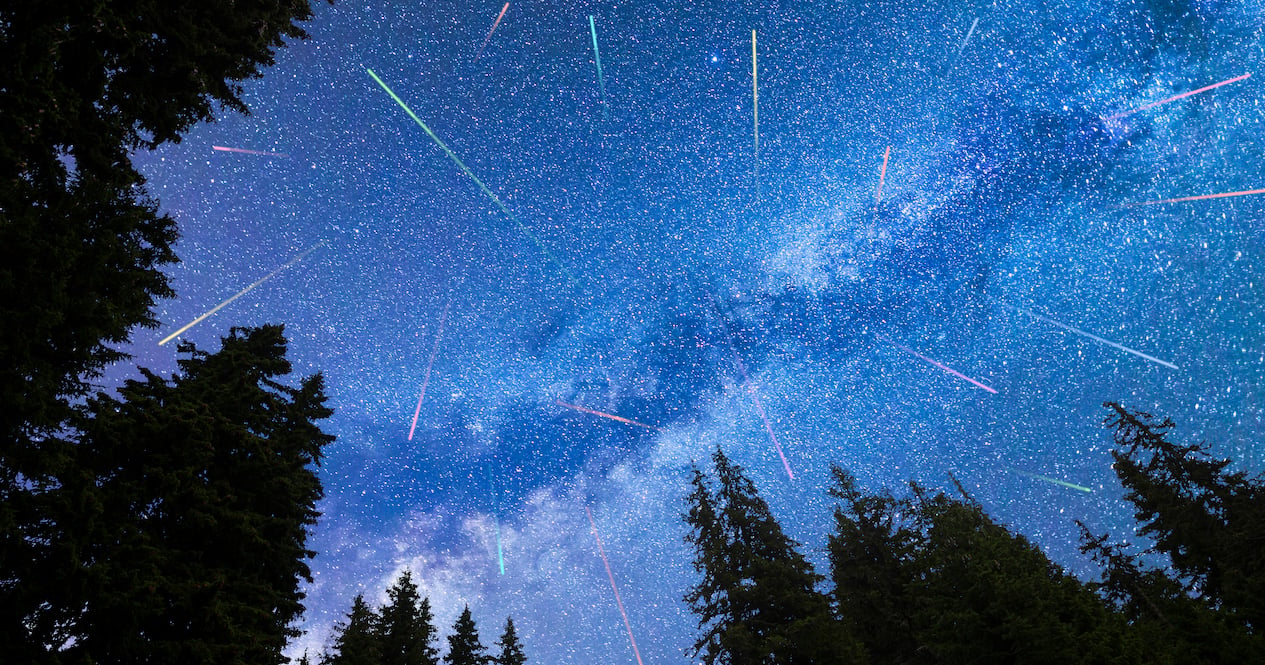Science
Venus' Clouds Contain Sulfuric Acid. That's Not a Problem for Life. – Universe Today

A recent study published in Astrobiology investigates the potential habitability in the clouds of Venus, specifically how amino acids, which are the building blocks of life, could survive in the sulfuric acid-rich upper atmosphere of Venus. This comes as the potential for life in Venus’ clouds has become a focal point of contention within the astrobiology community in the last few years. On Earth, concentrated sulfuric acid is known for its corrosivity towards metals and rocks and for absorbing water vapor. In Venus’ upper atmosphere, it forms from solar radiation interacting with sulfur dioxide, water vapor, and carbon dioxide.
Here, Universe Today discusses this new research with Dr. Sara Seager, who is a professor of physics at the Massachusetts Institute of Technology (MIT) and a co-author on the study, regarding the motivation behind the study, how it builds off previous studies, and what this could mean regarding the search for life in the clouds of Venus. Therefore, what is the motivation behind this recent research?
“We are pushing forward the decades-old speculative idea that there might be some kind of microbial-type life in the clouds of Venus,” Dr. Seager tells Universe Today. “The surface of Venus is too hot for life, but just like on Earth as one climbs a mountain or goes up in an airplane, the temperature gets colder and colder above the surface. In the Venus clouds 50 km above the surface the temperature is just right for life. However, the clouds of Venus are not made of water as Earth clouds are, but sulfuric acid is a highly destructive and toxic chemical. The motivation is to explore whether or not sulfuric acid can support complex molecules needed for life.”
For the study, the researchers examined 20 biogenic amino acids within sulfuric acid concentrations that mirrored Venusian atmospheric conditions. After four weeks, the researchers discovered that 11 of the 20 biogenic amino acids didn’t react—or exhibited stability—to the sulfuric acid concentrations while the eight amino acids exhibited stability in the sulfuric acid concentrations after experiencing alteration, and one experiencing instability after alteration. This alteration specifically pertained to the amino acid’s side chain, which is the part of the amino acid that contains each amino acid’s distinctive chemical characteristics, or its uniqueness compared to other amino acids. Along with demonstrating that amino acids remain stable in sulfuric acid concentrations, the study notes how this research “…also informs the possible origins of life on Venus, if life exists there.”
While this study focuses on the ability of amino acids to survive in sulfuric acid, a June 2023 study, which Dr. Seager was lead author, investigated if nucleic acid bases could survive in concentrated sulfuric acid, and whose findings also produced positive results, as well. So, how does this most recent study build off the June 2023 study?
“We can broadly say that biochemistry of life on Earth is composed of four different categories of compounds: nucleic acid bases, amino acids, fatty acids, and carbohydrates,” Dr. Seager tells Universe Today. “Carbohydrates are not stable, but we are working through all the others. This work relates to the June 2023 study as a continuation of working through different classes of molecules. You’ll be hearing more as we make further progress.”
In addition to the June 2023 study, this recent study comes as discussions about the potential for life in the clouds of Venus continue to gain traction, including a myriad of studies between 2020 and 2021 being published in Astrobiology outlining the potential for habitable conditions for life within Venus’ clouds. These studies included using models to determine how life could be possible, the potential presence of phosphorus within the clouds, and a potential instrument package that could be used to sample aerosols within Venus’ clouds to detect potential biogenic markers.
One such future mission that Dr. Seager mentions to Universe Today is Rocket Lab’s First Private Mission to Venus, which was outlined in a 2022 study published in Instrumentation and Methods for Astrophysics and which Dr. Seager tells Universe Today has a current scheduled launch date of January 2025. The mission is slated to use Rocket Lab’s configurable Photon spacecraft that will be fitted with a small, 1-kg (2.2-lb) scientific instrument whose purpose is to shine a laser into the clouds of Venus with the goal of literally lighting up potential organic molecules that might be present. But with all these studies and planned missions, will we ever find life in the clouds of Venus, and in what form?
“If there is life it is most likely simple, single-celled life,” Dr. Seager tells Universe Today. “If we can continue to send space missions to probe the Venus atmosphere directly, we can make progress in answering this question.”
What further discoveries will researchers make about the potential for life in the clouds of Venus in the coming years and decades? Only time will tell, and this is why we science!
As always, keep doing science & keep looking up!
Science
Asteroid Apophis will visit Earth in 2029, and this European satellite will be along for the ride

The European Space Agency is fast-tracking a new mission called Ramses, which will fly to near-Earth asteroid 99942 Apophis and join the space rock in 2029 when it comes very close to our planet — closer even than the region where geosynchronous satellites sit.
Ramses is short for Rapid Apophis Mission for Space Safety and, as its name suggests, is the next phase in humanity’s efforts to learn more about near-Earth asteroids (NEOs) and how we might deflect them should one ever be discovered on a collision course with planet Earth.
In order to launch in time to rendezvous with Apophis in February 2029, scientists at the European Space Agency have been given permission to start planning Ramses even before the multinational space agency officially adopts the mission. The sanctioning and appropriation of funding for the Ramses mission will hopefully take place at ESA’s Ministerial Council meeting (involving representatives from each of ESA’s member states) in November of 2025. To arrive at Apophis in February 2029, launch would have to take place in April 2028, the agency says.
This is a big deal because large asteroids don’t come this close to Earth very often. It is thus scientifically precious that, on April 13, 2029, Apophis will pass within 19,794 miles (31,860 kilometers) of Earth. For comparison, geosynchronous orbit is 22,236 miles (35,786 km) above Earth’s surface. Such close fly-bys by asteroids hundreds of meters across (Apophis is about 1,230 feet, or 375 meters, across) only occur on average once every 5,000 to 10,000 years. Miss this one, and we’ve got a long time to wait for the next.
When Apophis was discovered in 2004, it was for a short time the most dangerous asteroid known, being classified as having the potential to impact with Earth possibly in 2029, 2036, or 2068. Should an asteroid of its size strike Earth, it could gouge out a crater several kilometers across and devastate a country with shock waves, flash heating and earth tremors. If it crashed down in the ocean, it could send a towering tsunami to devastate coastlines in multiple countries.
Over time, as our knowledge of Apophis’ orbit became more refined, however, the risk of impact greatly went down. Radar observations of the asteroid in March of 2021 reduced the uncertainty in Apophis’ orbit from hundreds of kilometers to just a few kilometers, finally removing any lingering worries about an impact — at least for the next 100 years. (Beyond 100 years, asteroid orbits can become too unpredictable to plot with any accuracy, but there’s currently no suggestion that an impact will occur after 100 years.) So, Earth is expected to be perfectly safe in 2029 when Apophis comes through. Still, scientists want to see how Apophis responds by coming so close to Earth and entering our planet’s gravitational field.
“There is still so much we have yet to learn about asteroids but, until now, we have had to travel deep into the solar system to study them and perform experiments ourselves to interact with their surface,” said Patrick Michel, who is the Director of Research at CNRS at Observatoire de la Côte d’Azur in Nice, France, in a statement. “Nature is bringing one to us and conducting the experiment itself. All we need to do is watch as Apophis is stretched and squeezed by strong tidal forces that may trigger landslides and other disturbances and reveal new material from beneath the surface.”
By arriving at Apophis before the asteroid’s close encounter with Earth, and sticking with it throughout the flyby and beyond, Ramses will be in prime position to conduct before-and-after surveys to see how Apophis reacts to Earth. By looking for disturbances Earth’s gravitational tidal forces trigger on the asteroid’s surface, Ramses will be able to learn about Apophis’ internal structure, density, porosity and composition, all of which are characteristics that we would need to first understand before considering how best to deflect a similar asteroid were one ever found to be on a collision course with our world.
Besides assisting in protecting Earth, learning about Apophis will give scientists further insights into how similar asteroids formed in the early solar system, and, in the process, how planets (including Earth) formed out of the same material.
One way we already know Earth will affect Apophis is by changing its orbit. Currently, Apophis is categorized as an Aten-type asteroid, which is what we call the class of near-Earth objects that have a shorter orbit around the sun than Earth does. Apophis currently gets as far as 0.92 astronomical units (137.6 million km, or 85.5 million miles) from the sun. However, our planet will give Apophis a gravitational nudge that will enlarge its orbit to 1.1 astronomical units (164.6 million km, or 102 million miles), such that its orbital period becomes longer than Earth’s.
It will then be classed as an Apollo-type asteroid.
Ramses won’t be alone in tracking Apophis. NASA has repurposed their OSIRIS-REx mission, which returned a sample from another near-Earth asteroid, 101955 Bennu, in 2023. However, the spacecraft, renamed OSIRIS-APEX (Apophis Explorer), won’t arrive at the asteroid until April 23, 2029, ten days after the close encounter with Earth. OSIRIS-APEX will initially perform a flyby of Apophis at a distance of about 2,500 miles (4,000 km) from the object, then return in June that year to settle into orbit around Apophis for an 18-month mission.
Related Stories:
Furthermore, the European Space Agency still plans on launching its Hera spacecraft in October 2024 to follow-up on the DART mission to the double asteroid Didymos and Dimorphos. DART impacted the latter in a test of kinetic impactor capabilities for potentially changing a hazardous asteroid’s orbit around our planet. Hera will survey the binary asteroid system and observe the crater made by DART’s sacrifice to gain a better understanding of Dimorphos’ structure and composition post-impact, so that we can place the results in context.
The more near-Earth asteroids like Dimorphos and Apophis that we study, the greater that context becomes. Perhaps, one day, the understanding that we have gained from these missions will indeed save our planet.

Science
McMaster Astronomy grad student takes a star turn in Killarney Provincial Park

Astronomy PhD candidate Veronika Dornan served as the astronomer in residence at Killarney Provincial Park. She’ll be back again in October when the nights are longer (and bug free). Dornan has delivered dozens of talks and shows at the W.J. McCallion Planetarium and in the community. (Photos by Veronika Dornan)
BY Jay Robb, Faculty of Science
July 16, 2024
Veronika Dornan followed up the April 8 total solar eclipse with another awe-inspiring celestial moment.
This time, the astronomy PhD candidate wasn’t cheering alongside thousands of people at McMaster — she was alone with a telescope in the heart of Killarney Provincial Park just before midnight.
Dornan had the park’s telescope pointed at one of the hundreds of globular star clusters that make up the Milky Way. She was seeing light from thousands of stars that had travelled more than 10,000 years to reach the Earth.
This time there was no cheering: All she could say was a quiet “wow”.
Dornan drove five hours north to spend a week at Killarney Park as the astronomer in residence. part of an outreach program run by the park in collaboration with the Allan I. Carswell Observatory at York University.
Dornan applied because the program combines her two favourite things — astronomy and the great outdoors. While she’s a lifelong camper, hiker and canoeist, it was her first trip to Killarney.
Bruce Waters, who’s taught astronomy to the public since 1981 and co-founded Stars over Killarney, warned Dornan that once she went to the park, she wouldn’t want to go anywhere else.
The park lived up to the hype. Everywhere she looked was like a painting, something “a certain Group of Seven had already thought many times over.”
She spent her days hiking the Granite Ridge, Crack and Chikanishing trails and kayaking on George Lake. At night, she went stargazing with campers — or at least tried to. The weather didn’t cooperate most evenings — instead of looking through the park’s two domed telescopes, Dornan improvised and gave talks in the amphitheatre beneath cloudy skies.
Dornan has delivered dozens of talks over the years in McMaster’s W.J. McCallion Planetarium and out in the community, but “it’s a bit more complicated when you’re talking about the stars while at the same time fighting for your life against swarms of bugs.”
When the campers called it a night and the clouds parted, Dornan spent hours observing the stars. “I seriously messed up my sleep schedule.”
She also gave astrophotography a try during her residency, capturing images of the Ring Nebula and the Great Hercules Cluster.

“People assume astronomers take their own photos. I needed quite a lot of guidance for how to take the images. It took a while to fiddle with the image properties, but I got my images.”
Dornan’s been invited back for another week-long residency in bug-free October, when longer nights offer more opportunities to explore and photograph the final frontier.
She’s aiming to defend her PhD thesis early next summer, then build a career that continues to combine research and outreach.
“Research leads to new discoveries which gives you exciting things to talk about. And if you’re not connecting with the public then what’s the point of doing research?”

Science
Where in Vancouver to see the ‘best meteor shower of the year’

Eyes to the skies, Vancouver, because between now and September 1st, stargazers can witness the ‘best meteor shower of the year’ according to NASA.
Known for its “long wakes of light and colour,” the Perseid Meteor Shower will peak on August 12th, 2024 – so consider this list a great place to start if you’re in search of a prime stargazing spots!
Grab your lawn chairs and blankets, and seek as little light pollution as possible. Here are some ideal stargazing spots to check out in and around Vancouver this summer.
Recent Posts:
This island with clear waters has one of the prettiest towns in BC
10 beautiful lake towns to visit in BC this summer
Wreck Beach
If you’re willing to brave the stairs and the regulars, it doesn’t get much better than Wreck Beach for watching the skies – for both sunsets and stargazing. The west-facing views practically eliminate immediate distractions from the city lights.
Spanish Banks Park
Spanish Banks is the perfect mixture of convenience and quality. Its location offers unobstructed views of the skies above, and it’s far enough away from downtown to mitigate some of the light pollution.
Burnaby Mountain Park
If it’s good enough for a university observatory, it’s good enough for us. Pretty much anywhere on Burnaby Mountain will offer tremendous viewpoints, but the higher you get the better (safely).
Porteau Cove
A short drive from Vancouver gets you incredible views of the Howe Sound from directly on the water. And naturally, its distance from any nearby community makes it a prime spot for stargazing.
Cypress Mountain
In addition to having one of the best viewpoints in Vancouver period, Cypress Mountain (and the road up to it) is also a great place to watch the sky. For a double-whammy, we say that you come around sunset, then hang out while the sky gets dark. Sure, it might take a few hours, but the view is worth it.
So there you have it, stargazers! Get ready to witness a dazzling show this summer.

-

 Business19 hours ago
Business19 hours agoJapanese owner of 7-Eleven Seven & i Holdings rejects Couche-Tard takeover offer
-

 News8 hours ago
News8 hours agoCanada surpasses gold, total medal count from Tokyo Paralympics on Day 9
-

 Economy16 hours ago
Economy16 hours agoRecent immigrants shut out of strong wage growth as unemployment rises in Canada
-

 Economy22 hours ago
Economy22 hours agoStatistics Canada to release August jobs report today amid labour market slowdown
-

 Real eState16 hours ago
Real eState16 hours agoMontreal home sales, prices rise in August: real estate board
-

 News14 hours ago
News14 hours agoClinton Orr & Jodi Ruta are Committed to Strengthening the Beausejour, Manitoba Community
-

 News8 hours ago
News8 hours agoCanadian resident arrested in Quebec over alleged New York terror plot
-

 Health3 hours ago
Health3 hours agoHeal Your Dog Naturally



















